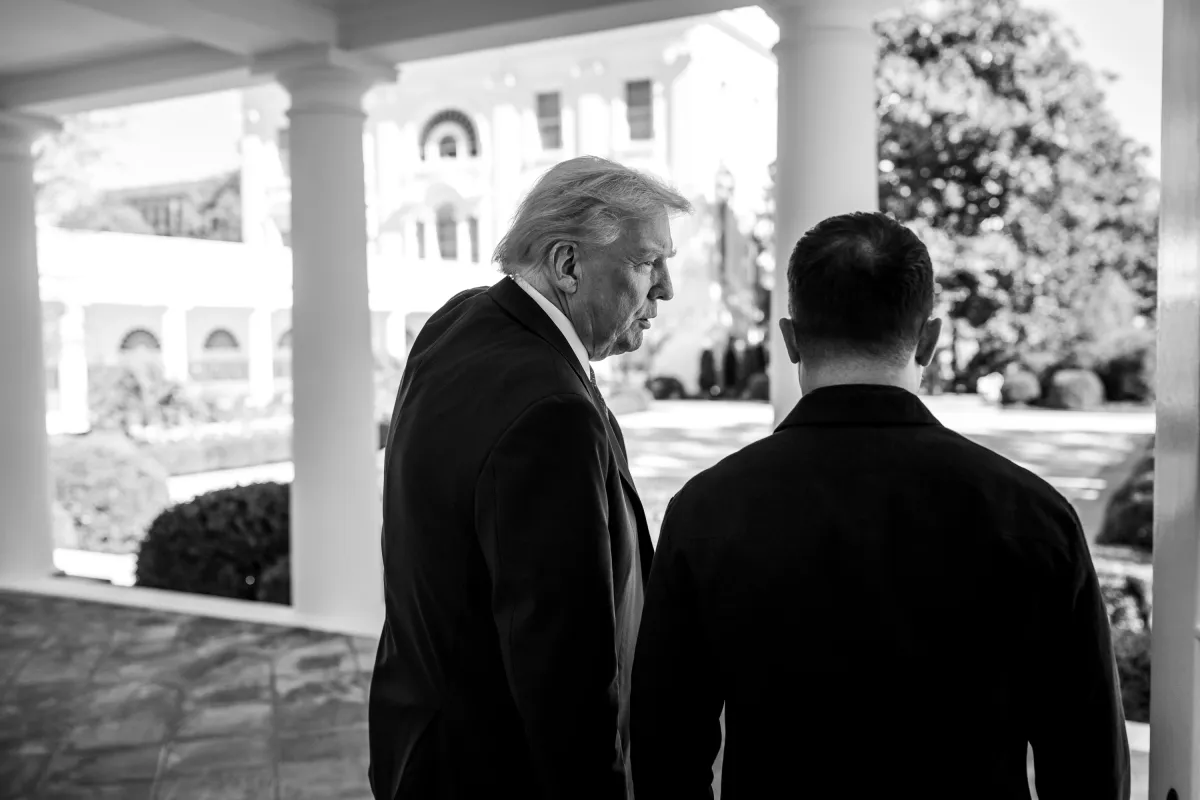WASHINGTON — President Donald Trump welcomed Ukrainian President Volodymyr Zelenskyy to the White House on Friday for high‑stakes talks that underscored both the urgency of Ukraine’s war effort and the delicate balancing act facing Washington. The meeting, their sixth since Trump returned to office, centered on Kyiv’s request for U.S. Tomahawk cruise missiles — long‑range weapons capable of striking deep inside Russian territory — but ended with no clear commitment from the United States.
Instead, Trump signaled that his priority remains ending the war rather than escalating it, even as Zelenskyy pressed for more robust military support. “It’s time to stop the killing and make a deal,” Trump wrote on Truth Social after the meeting, echoing his message to Russian President Vladimir Putin in a phone call earlier this week.
The encounter highlighted the competing pressures shaping U.S. policy: Ukraine’s urgent need for advanced weaponry, Russia’s warnings of escalation, and Trump’s own desire to cast himself as the dealmaker who can bring the conflict to a close.
A Meeting Framed by Missiles and Drones
Zelenskyy arrived in Washington with a clear agenda: to secure Tomahawk missiles that could give Ukraine the ability to strike Russian logistics hubs, command centers, and supply lines far beyond the front. At the start of the meeting, he floated a novel proposal — offering to provide the United States with Ukraine’s domestically produced drones in exchange for the missiles.
“We have thousands of drones,” Zelenskyy told reporters. “But we don’t have Tomahawks.”
Trump responded with guarded interest. “Yeah, we would,” he said when asked if the U.S. might consider Ukrainian drones. “We build our own drones, but we also buy drones from others, and they make a very good drone.” Still, he quickly pivoted back to his broader message: “We’d much rather have them not need Tomahawks. We’d rather have the war be over.”
The exchange captured the tension at the heart of the talks. Zelenskyy sought concrete commitments to strengthen Ukraine’s battlefield position, while Trump emphasized diplomacy and restraint, wary of steps that could draw the United States deeper into the conflict.
Trump’s Balancing Act
The White House meeting came just a day after Trump held a lengthy phone call with Putin, during which the two leaders agreed to meet in Budapest within weeks for direct talks. Trump has portrayed himself as uniquely capable of brokering an end to the war, telling reporters Friday that he believes he can persuade Putin to compromise. “Yup,” he said when asked if he thought he could convince the Russian leader.
That posture has fueled both hope and skepticism. Supporters argue that Trump’s willingness to engage directly with Moscow could open a path to peace. Critics warn that his eagerness to strike a deal risks pressuring Ukraine into concessions that could undermine its sovereignty.
Zelenskyy, for his part, struck a careful tone. He acknowledged that he and Trump had agreed not to publicly discuss the Tomahawk issue further, citing the risk of escalation. “We decided that we don’t speak about it because nobody wants — the United States doesn’t want escalation,” he said at a press conference following the meeting.
Still, he made clear that Ukraine’s need for advanced weapons remains acute. “We are fighting for our survival,” he said. “Every day matters. Every weapon matters.”
International and Domestic Reactions
The meeting drew intense scrutiny abroad. European allies, who have shouldered much of the burden of supporting Ukraine, watched closely for signs of U.S. commitment. NATO Secretary‑General Jens Stoltenberg welcomed the talks but urged Washington not to waver. “Ukraine needs sustained support, including advanced capabilities,” he said in Brussels.
Russia, meanwhile, dismissed the meeting as political theater. Kremlin spokesman Dmitry Peskov said Moscow was “not concerned” about the possibility of Tomahawk deliveries, insisting that Russia’s defenses could neutralize them. But he warned that any such move would be seen as a “major escalation.”
In Washington, the political response fell along familiar lines. Republicans largely backed Trump’s cautious approach, with Sen. Lindsey Graham praising him for “keeping the focus on ending the war, not prolonging it.” Democrats accused the president of undermining Ukraine’s position. “This is not the time for half‑measures,” said Sen. Chris Murphy. “Ukraine needs weapons, not platitudes.”
Humanitarian Stakes and the Road Ahead
Beyond the geopolitics, the meeting underscored the human toll of a war now entering its fourth year. Ukraine continues to endure relentless Russian strikes on its infrastructure, while millions of civilians face displacement, power shortages, and economic hardship. Aid groups have warned that without greater international support, the humanitarian crisis could deepen as winter approaches.
For Trump, the challenge is to reconcile his desire to end the war quickly with the realities on the ground. His administration has provided Ukraine with significant aid, but he has resisted calls for long‑range missiles, fearing they could provoke Russia into widening the conflict.
The Budapest summit with Putin looms as the next critical moment. Trump has framed it as an opportunity to push both sides toward a ceasefire, though details remain vague. Zelenskyy has said he is open to negotiations but insists that any deal must respect Ukraine’s territorial integrity.
For now, the White House meeting offered no breakthrough, only a reminder of the difficult choices ahead. Ukraine left without the Tomahawks it sought, but with a promise of continued dialogue. Trump left with the chance to cast himself as the leader steering the world toward peace — but also with the burden of proving that his approach can deliver results.
As Zelenskyy departed Washington, he struck a note of cautious optimism. “We had a very frank conversation,” he said. “We will continue to work together. The future of Ukraine depends on it.”
Reporting by Nick Ravenshade. Original analysis by NENC Media Group.
Sources: NBC News, MSN, United24 Media, Kyiv Independent, USA Today, PBS, CBS News, DW, ABC News.
Photo: Official White House Photo, Public Domain, via The White House




Comments ()